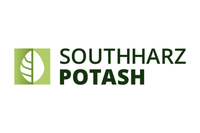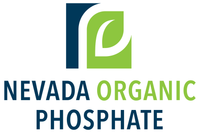Food Security is Key to Agricultural Investing — Here’s Why
What is food security, and what does it have to do with agricultural investing? Here’s a quick overview for investors.

What is food security, and how does it relate to agricultural investing? For investors interested in making a profit — and a difference in the world — those two questions are worth answering.
Investors may be unfamiliar with the term food security, especially when combined with agricultural investing, but it’s simple to define. The UN Committee on World Food Security describes food security as “the condition in which all people, at all times, have physical, social and economic access to sufficient safe and nutritious food that meets their dietary needs and food preferences for an active and healthy life.”
As that definition shows, there are both nutritional and economic aspects to food security. In fact, the UN Food and Agriculture Organization (FAO) has outlined four dimensions of food security: food utilization, physical availability of food, economic and physical access to food and stability of the first three factors over time.
While some areas of the globe can be considered food secure, those conditions do not exist the world over. Sadly, the absence of food security has many negative consequences. For example, it can lead to malnutrition and other health issues, which are problems that can shape a person’s life from childhood onward.
A lack of food security can also lead to problems at the city and country level — after all, those who are malnourished generally cannot work productively.
What factors influence food security?
Many organizations are working to improve food security through agricultural investment, but there are numerous challenges they must face. Often they have to address the issue from several different angles; in some cases, they may have to make emergency interventions, and in others they may make longer-term economic and educational efforts to improve a location’s ability to maintain food security.
One key issue that organizations focused on food security need to contend with is access to food. The World Food Programme asserts that there is currently enough food in the world to keep every one of its inhabitants healthy and active, but the problem is access. Fixing access problems requires looking at infrastructure, trade and economic conditions, and many organizations seek to address those factors.
Of course, the world’s growing population is also a major issue when it comes to food security. According to the FAO, the number of people facing severe food insecurity globally rose by 46 million people between 2020 and 2021. The organization estimates that nearly 828 million people are struggling with severe levels of food insecurity, representing nearly 10 percent of the world’s population.
When the amount of people facing moderate levels of food insecurity are accounted for, that figure rises to 2.3 billion worldwide who lack access to safe, nutritious and sufficient food sources.
What’s more, most population growth is expected to occur in developing countries in Asia and Africa, where access to the benefits of advanced agricultural technology is limited. Existing agricultural land is shrinking as well, meaning that it will be hard to plant new crops, creating the risk of food shortages and scarcity.
The FAO notes that as the world's population grows, the amount of arable land that can be used to grow food shrinks. The organization estimates that given today’s population growth projections, the amount of arable land per person in 2050 will be one-quarter of what was available in 1960.
Investing in agricultural technology that allows for higher crops yields and more sustainable farming practices is needed if global food insecurity is to be adequately addressed in the 21st century.
How to invest in food security?
As mentioned, many organizations focused on food security are addressing the issues above and the potential for a global food crisis. One way that they are doing so is through investment in agriculture.
Agriculture investment can come in many forms. The US has been the largest financial contributor to the FAO’s budget for decades. In the 2018/2019 period, the country contributed US$529 million to support the global food and agriculture sector, including crop forecasting, food safety, disaster assistance and sustainable agriculture.
In mid-2022, the Canadian government announced C$250 million to help address the global food security crisis, with a focus on the most vulnerable in Sub-Saharan Africa. As of the date of the announcement, Canada had already contributed C$514.4 million for worldwide humanitarian food aid over the course of the year.
But it’s not just governments and large organizations that can improve food security by investing in agriculture. Individual investors can do so as well, and those who are savvy with where they put their money may be able to make a profit. Generally, investment strategies for the agricultural sector involve investing in natural resources like potash and phosphate. Both potash and phosphate play a large role in preventing food insecurity as they provide the nutrients that are required to keep arable land fertile enough for crop cultivation and farming to take place.
For investing in potash, there are several large producers that currently dominate the market. It’s also important to understand the different types of potash fertilizers, including sulfate of potash (SOP) and muriate of potash (MOP).
However, since food security is a long-term issue, investing in exploration and development companies is important as well. There are plenty of companies developing potash projects all around the world; many are listed on the TSX and TSXV, and others are listed on the ASX.
Like potash, phosphate is also a necessary fertilizer for certain soils and is important to ensuring the global population has access to sustainable food. However, unlike potash, which is found in many places globally, phosphate is more scarce. Still, there are a fair number of phosphate-focused companies to choose from. You can learn more about phosphate investing by clicking here.
This is an updated version of an article originally published by the Investing News Network in 2014.
Don’t forget to follow us @INN_Resource for real-time news updates!
Securities Disclosure: I, Melissa Pistilli, hold no direct investment interest in any company mentioned in this article.




